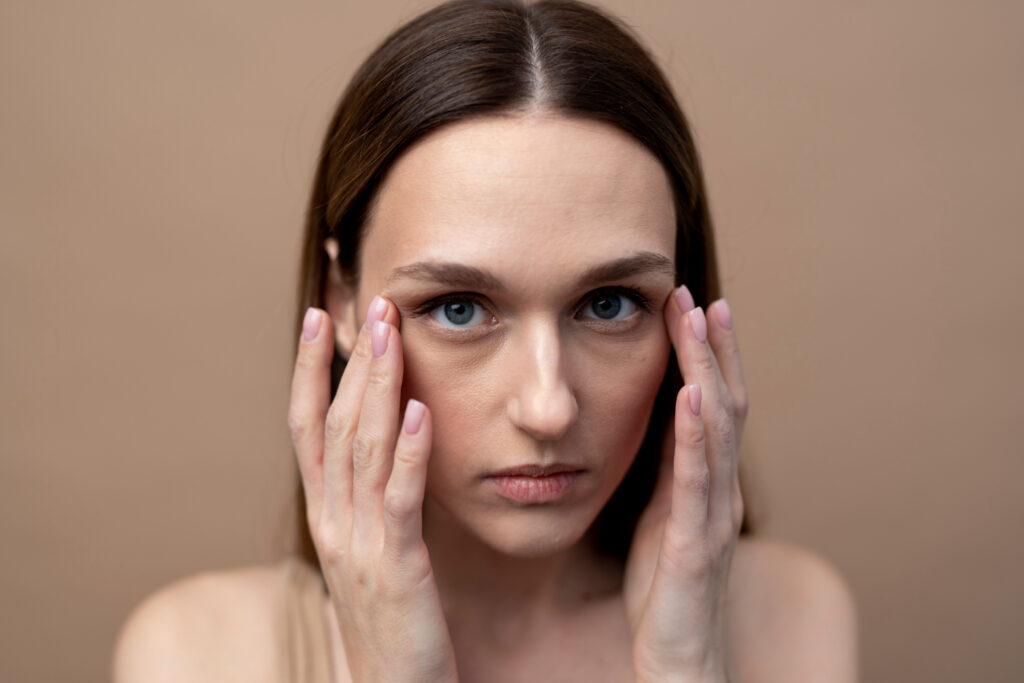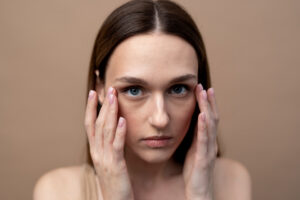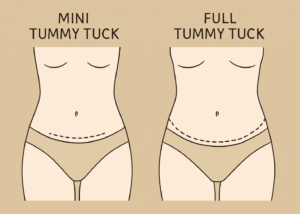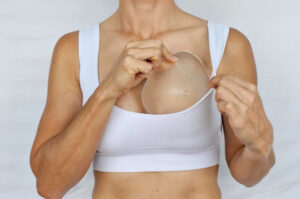Have you ever looked in the mirror and noticed those stubborn bags under your eyes that never seem to go away, no matter how much you sleep? Or maybe that tired look that makes people ask if you’re feeling okay, even when you’re perfectly rested? If any of this sounds familiar, you’ve probably thought about solutions that go beyond creams and topical treatments.
The area around the eyes tends to be one of the first places to show signs of aging. For many women, this appears as prominent bags, loose skin, and an overall tired appearance that can deeply affect self-confidence.
Fortunately, there’s a surgical solution that has changed the lives of thousands of people: lower blepharoplasty.
Why do under-eye bags appear?
Before understanding how the surgery works, it helps to know what causes these bothersome changes.
Over the years, several structural transformations take place in the periorbital area. The muscles that support the eyelids gradually weaken, while the skin loses elasticity and collagen.
The fat that normally remains behind the eye muscles starts to push forward, creating those characteristic bags.
Factors such as genetics, sun exposure, smoking, and fluid retention can accelerate this process.
What is lower blepharoplasty?
Lower blepharoplasty is a plastic surgery procedure designed to correct fat bags and excess skin under the eyes. It targets the lower eyelid, aiming to smooth the appearance of puffiness and sagging.
In general, there are two common approaches:
- Transcutaneous blepharoplasty, when the incision is made just below the lash line;
- Transconjunctival blepharoplasty, performed inside the eyelid, leaving no visible scar.
The choice of technique depends on the degree of laxity and the skin characteristics of each patient. Both methods aim to rejuvenate the eyes without changing the natural expression.
| Type of blepharoplasty | Area treated | Main indication |
| Upper | Upper eyelid | Excess skin and drooping eyelid |
| Lower (lower blepharoplasty) | Lower eyelid | Eye bags, dark circles, and under-eye sagging |
Who would be a good candidate?
You might be wondering if this procedure would be right for your specific situation.
Generally, ideal candidates present some or all of the following characteristics:
- Noticeable under-eye bags that don’t improve with rest
- Excess skin on the lower eyelid creating wrinkles or folds
- Persistent dark circles caused by hollows in the tear trough area
- A constantly tired or aged appearance
- Realistic expectations about the results
The typical age range varies widely. While many patients seek the procedure between ages 40 and 60, some younger women with a genetic predisposition may also benefit.
At Illusions Plastic Surgery, each case is carefully evaluated to determine whether the surgery would be the most suitable option.
Read more:
👉 What’s the best age for blepharoplasty?
What to expect during the consultation
Your journey would begin with a detailed consultation. During this appointment, the surgeon would carefully examine the anatomy of your periorbital area, discuss your specific concerns, and explain which techniques might be most appropriate to achieve your goals.
You should be prepared to discuss:
- Your complete medical history, including any eye conditions
- Current medications and supplements
- Smoking history
- Expectations and goals for the procedure
- Concerns about recovery and downtime
Step-by-step procedure
On the day of surgery, you would arrive at the surgical center and receive either local anesthesia with sedation or general anesthesia, depending on the extent of the procedure. Lower blepharoplasty typically takes between one and two hours.
The surgeon would follow these basic steps:
- Precise marking of the areas to be treated
- Making the incisions according to the chosen technique
- Careful removal or repositioning of fat deposits
- Elimination of excess skin, if necessary
- Meticulous closure of the incisions with fine sutures
After the procedure, you would be monitored in the recovery room before being discharged the same day with detailed post-operative care instructions.
Recovery and post-operative care
Recovery from lower blepharoplasty usually progresses in a predictable way, although each person’s experience is unique.
During the first 24 to 48 hours, you would likely experience:
- Moderate to significant swelling
- Bruising around the eyes
- Sensitivity and mild discomfort
- Tearing or dry eyes
Gentle application of cold compresses helps minimize swelling. Keeping your head elevated, even while sleeping, also helps reduce puffiness more quickly.
Most patients return to work within one to two weeks, although strenuous physical activity should be avoided for several weeks.
Stitches are usually removed after five to seven days. Bruising tends to fade within about two weeks, though makeup can help cover any residual discoloration during this period.
Results and longevity
Lower blepharoplasty provides long-lasting results. According to the American Board of Cosmetic Surgery (ABCS), the effects can remain visible for 8 to 10 years, depending on lifestyle habits, genetics, and daily skincare routines.
Factors such as regular sunscreen use, adequate sleep, and a balanced diet help preserve the outcome for a longer period.
It’s important to remember that surgery does not stop the natural aging process but helps slow down its visible effects around the eyes.
Combining with other procedures
Many women choose to combine lower blepharoplasty with other facial procedures to achieve more comprehensive results.
Popular combinations include:
| Procedure | Benefit of combining |
| Upper blepharoplasty | Complete rejuvenation of the eye area |
| Facelift | Overall facial harmony and more dramatic results |
| Brow lift | Lifts drooping brows that can affect the eyes |
| Facial fillers | Smooths transitions between treated areas |
| Laser resurfacing | Improves skin texture and tone |
Combining procedures can be more cost-effective and may shorten total recovery time compared to performing separate surgeries.
Financial investment
The cost of lower blepharoplasty in the United States varies considerably depending on geographic location, the surgeon’s experience, and the complexity of the case. On average, patients can expect to invest between $3,000 and $7,000 for the procedure.
This amount typically includes the surgeon’s fees, surgical facility costs, anesthesia, and post-operative follow-up. Health insurance rarely covers purely cosmetic blepharoplasty, although partial coverage may be available if drooping eyelids interfere with vision.
Many practices, including Illusions Plastic Surgery, offer financing options to make the procedure more accessible, allowing patients to pay in manageable monthly installments.
Taking the next step
If you’ve been considering lower blepharoplasty, the first and most important step involves scheduling a consultation with a board-certified plastic surgeon. During this visit, you would have the chance to ask questions, share your concerns, and determine whether the procedure aligns with your aesthetic goals.
Choosing the right surgeon makes all the difference. Look for certification from the American Board of Plastic Surgery (ABPS), positive reviews from previous patients, and a strong portfolio of before-and-after photos that demonstrate consistent, natural-looking outcomes.
At Illusions Plastic Surgery, patients receive much more than a surgical procedure — they experience personalized care focused on comfort, safety, and results that enhance confidence without altering individuality. Each consultation is designed to help you understand every step of the process, from pre-surgery preparation to long-term recovery.
The decision to undergo cosmetic surgery is deeply personal and should always be made with full information and realistic expectations. With the right surgeon and proper preparation, lower blepharoplasty can deliver transformative results that restore your confidence and help you feel more aligned with how you see yourself.
Ready to rediscover your natural, refreshed look?







